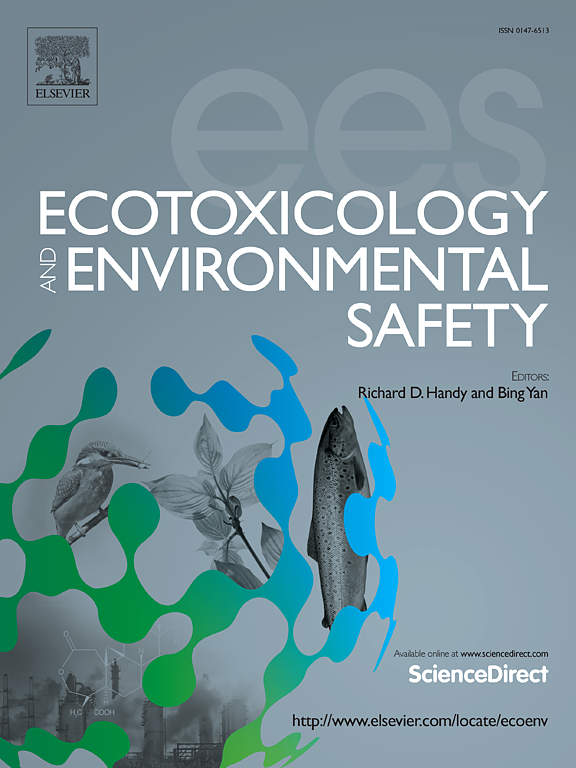Urinary microplastic contaminants in primary school children: Associations with behavioral development
IF 6.2
2区 环境科学与生态学
Q1 ENVIRONMENTAL SCIENCES
引用次数: 0
Abstract
Behavioral problems in children have been increasingly linked to environmental exposures. Microplastics (MPs), prevalent in urban environments, are emerging contaminants with potential neurodevelopmental effects. This study examines the relationship between urinary MPs and behavioral outcomes among primary school children in Shenyang, China. This study was conducted involving 1000 children aged 6–9 years from 40 schools across Shenyang. Urinary MPs, including polyamide (PA), polypropylene (PP), and polyvinyl chloride (PVC), were quantified using optical microscopy. Behavioral outcomes were assessed using the Strengths and Difficulties Questionnaire (SDQ). Mixed-effect negative binomial models evaluated associations between MPs and SDQ scores, adjusting for relevant covariates. The median urinary total microplastic concentration was 9 particles/100 mL. Increased particle counts of urinary MPs were positively associated with higher scores for emotional problems, conduct problems, hyperactivity, and peer problems. Total microplastic levels were linked to increased emotional symptoms (estimate: 0.128, 95 % CI: 0.065–0.198, p < 0.001), conduct problems (estimate: 0.231, 95 % CI: 0.140–0.323, p < 0.001), and hyperactivity (estimate: 0.168, 95 % CI: 0.101–0.235, p < 0.001). Peer relationship issues were also elevated with higher urinary microplastic levels (estimate: 0.206, 95 % CI: 0.133–0.271, p < 0.001). Conversely, prosocial behaviors declined with increased microplastic concentrations (estimate: −0.125, 95 % CI: −0.192 to −0.052, p = 0.001). Stratified analyses indicated no significant differences in these associations between boys and girls. Overall, urinary microplastic concentrations were significantly associated with adverse behavioral outcomes in children, highlighting the potential neurodevelopmental risks of microplastic exposure.
求助全文
约1分钟内获得全文
求助全文
来源期刊
CiteScore
12.10
自引率
5.90%
发文量
1234
审稿时长
88 days
期刊介绍:
Ecotoxicology and Environmental Safety is a multi-disciplinary journal that focuses on understanding the exposure and effects of environmental contamination on organisms including human health. The scope of the journal covers three main themes. The topics within these themes, indicated below, include (but are not limited to) the following: Ecotoxicology、Environmental Chemistry、Environmental Safety etc.

 求助内容:
求助内容: 应助结果提醒方式:
应助结果提醒方式:


